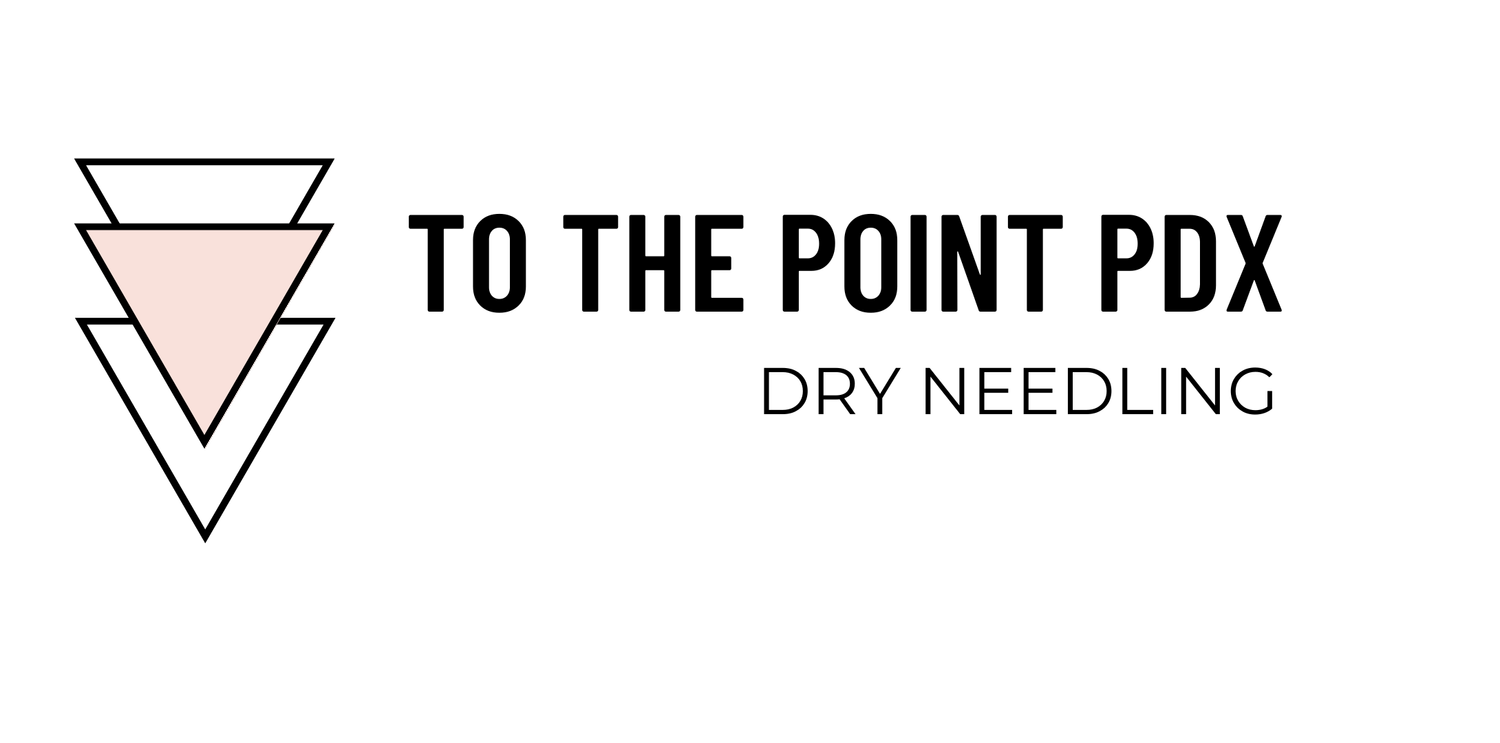Dry needling vs. acupuncture: What’s the difference?
Good question! While both dry needling and acupuncture involve the use of needles, they differ in their underlying principles and applications.
Dry needling is a technique that focuses on targeting trigger points in muscles to relieve pain and improve muscle function. It works by inserting a thin filament needle into the trigger point to stimulate a twitch response and release tension in the muscle.
Acupuncture is based on traditional Chinese medicine and aims to restore the balance of energy, or qi, in the body. It involves inserting needles into specific acupuncture points along energy channels to promote healing and alleviate various health conditions.
Dry Needling
Goal of the treatment: to release trigger points (active or latent) that inhibit normal muscle movement.
Points are identified by physical exam or by specific palpation.
Needles: To The Point PDX uses the gold-standard of needles for dry needling procedures. These solid, stainless steel needles are sturdier than typical acupuncture needles and are tripled polished to ensure a smooth insertion experience for the patient.
In a dry needling treatment, there is no needle retention. The procedure does not call for a needle to sit in the skin.
The needling techniques used by the To The Point PDX providers in a dry needling treatment are specific to dry needling techniques taught by Myopain Seminars.
To The Point PDX providers are certified to treat all body parts, including muscles of the neck and chest muscles.
Dry needling appointments last 20-30 minutes.
Conditions may take 6-10 treatments to resolve.
Acupuncture
Goal of the treatment: to restore the energy of the body using “Qi”.
Points are defined by the texts of Chinese Medicine. All 365 acupoints are found on the body by using a measurement length called a “cun”. A “cun” is proportionate to the width of the patient’s thumb.
Needles: To The Point PDX uses Serin needles — solid, stainless steel needles that are much thinner than dry needling needles and often coated with silicon to ensure painless insertion.
The providers at To The Point PDX are trained and licensed acupuncturists with doctoral degrees from Chinese Medicine educational institutions.
Acupuncture appointments are 40 minutes long and include 20-40 minutes of resting with the needles inserted.
Acupuncture is the best used for the following conditions: digestive upset, stress reduction, smoking cessation, fertility irregularities, menstrual pain.
If you feel like you are “sensitive” to needles, an acupuncture treatment will suit you better than a dry needling appointment.
Conditions may take 10-20 treatments to resolve.
Acupuncture is not dry needling. Dry needling is not acupuncture.
Acupuncturists are not taught the dry needling technique during their 2,000 hour training requirements. Physical therapists and chiropractors are not taught acupuncture techniques in their educational programs.
To The Point PDX houses the top experts at dry needling in Portland. Dr. Sarah is a nationally certified dry needling provider and is also nationally certified in East Asian Medicine.
